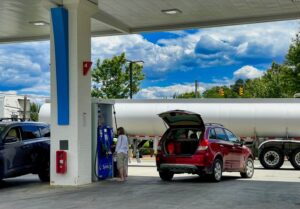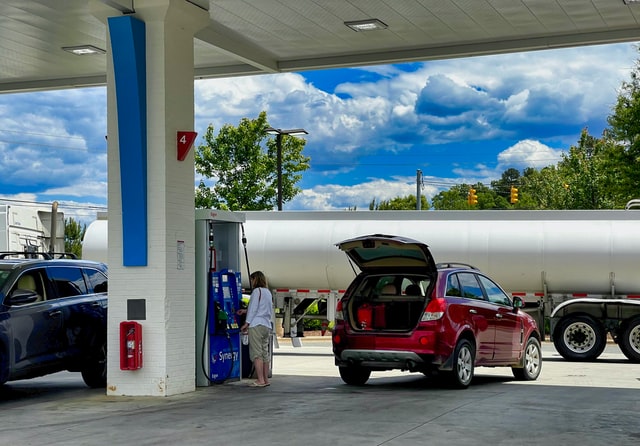Petrol skyrocketing: driving is now a luxury

TORONTO – Getting around by car, even to go to work, will be a luxury soon. The overwhelming majority of Canadian in fact are “worried” that they will not be able to afford the cost of filling up at the pumps this summer as fuel prices – already record – claim to rise.
The fears emerge from an Ipsos poll conducted exclusively for Global News which published it today highlighting that, with the average price of regular gasoline over $ 2 per liter earlier this month, 69% of Canadian said that they will not be able to afford to fill up. Fears that are even more widespread among families with children (80%) and the younger generation between the ages of 18-34 (77%) and 35-54 (74%).
“There’s a great deal of concern about the affordability of gas,” said Gregory Jack, Ipsos Canada’s vice-president of public affairs, in an interview with Global News. “The worry is especially true across the country and especially with people who have kids.”
Some 75 per cent of Canadians say they’re driving less in order to save on costs at the pump. And half of the Canadians surveyed say they can’t afford to fill the entire tank.
Most market observers have pointed to the war in Ukraine and the persistent Covid-19 pandemic as the main cause of the disruption of the supply of fuels and, therefore, of the increase in prices. And according to “GasBuddy” oil analyst Patrick De Haan, the start of the summer travel season – the first unrestricted pandemic – is renewing demand for barrels of oil coming to market. And that will only raise prices further.
But vacation travel is perhaps the lesser evil. In fact, Gregory Jack notes that high fuel prices have come just when Canadian workers have returned to the office after two years of remote work, finding themselves at previously unthinkable expenses, between skyrocketing gasoline and lunches out that have become more expensive than before.
As part of the same survey, Ipsos also asked Canadians how high they expect fuel prices to go: 3 in 10 said they expect gasoline to hit the $ 2.50 / L mark, while 15% of respondents expect pump prices to reach $ 3 / L.
According to Patrick De Haan, the $ 2.50 threshold is possible but “I expect some relief – he adds -: fuel demand typically peaks in mid-late July, and then begins to decline in August, around the slower autumn season “. The increase in oil production in Canada and the United States could also give motorists “a little breathing room”, but the expert also warns that the ongoing war in Ukraine and the fluctuations in the global economy could continue to exert pressure on oil prices.
In this complex picture, interest in electric vehicles is back strong and the Ipsos survey shows that 44% of respondents are evaluating the possibility of switching to a smaller and more fuel-efficient vehicle in the next year, more than a third of respondents (36%) are considering purchasing an electric vehicle to lower costs and nearly half (49%) of people aged 18 to 34 are considering switching to electric.
The problem is the still high cost of such vehicles – those earning over $ 100,000 a year are more likely to buy one (45%) than those earning between $ 40,000 and $ 60,000 (31%). “But it is much cheaper to power an electric vehicle than it is, right now, to power a gasoline engine,” says Dimitry Anastakis, a professor at the Rotman School of Management, according to whom electric vehicles are an increasingly option, practicable and realistic, although there is still the problem of a reliable charging infrastructure. Anastakis notes that today’s refueling infrastructure remains focused on gasoline, but at the same time predicts that in a few years motor vehicles and electric vehicles will be on the same footing. The future is near.
Photo by Gene Gallin on Unsplash



